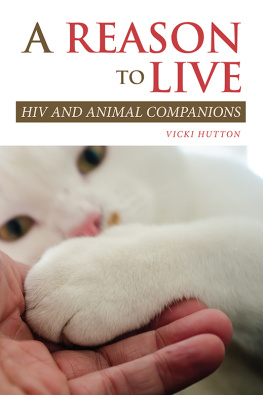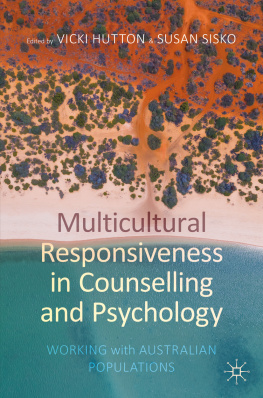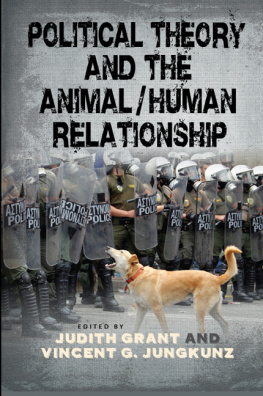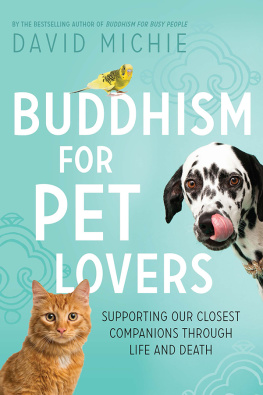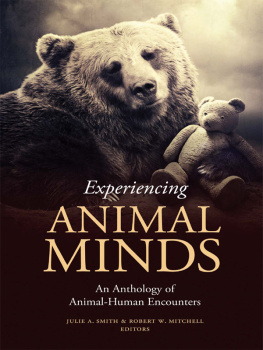Contents

A REASON
TO LIVE
NEW DIRECTIONS IN THE HUMANANIMAL BOND
Series editors: Alan M. Beck and Marguerite E. OHaire, Purdue University
A dynamic relationship has always existed between people and animals. Each influences the psychological and physiological state of the other. This series of scholarly publications, in collaboration with Purdue Universitys College of Veterinary Medicine, expands our knowledge of the interrelationships between people, animals, and their environment. Manuscripts are welcomed on all aspects of human-animal interaction and welfare, including therapy applications, public policy, and the application of humane ethics in managing our living resources.
Other titles in this series:
Transforming Trauma: Resilience and Healing Through Our Connections With Animals
Philip Tedeschi and Molly Anne Jenkins
That Sheep May Safely Graze: Rebuilding Animal Health Care in War-Torn Afghanistan
David M. Sherman
Animal-Assisted Interventions in Health Care Settings: A Best Practices Manual for Establishing New Programs
Sandra B. Barker, Rebcca A. Vokes, and Randolph T. Barker
Moose! The Reading Dog
Laura Bruneau and Beverly Timmons
Leaders of the Pack: Women and the Future of Veterinary Medicine
Julie Kumble and Donald F. Smih
Exploring the Gray Zone: Case Discussions of Ethical Dilemmas for the Veterinary Technician
Andrea DeSantis Kerr, Robert Pete Bill, Jamie Schoenbeck Walsh, and Christina V. Tran
Pet Politics: The Political and Legal Lives of Cats, Dogs, and Horses in Canada and the United States
Susan Hunter and Richard A. Brisbin, Jr.
Free Market Dogs: The Human-Canine Bond in Post-Communist Poland
Micha Piotr Prgowski and Justyna Wodarczyk
Teaming With Your Therapy Dog
Ann R. Howie
Come, Let Me Guide You: A Life Shared With a Guide Dog
Susan Krieger
Animal Cruelty and Freedom of Speech: When Worlds Collide
Abigail Perdue and Randall Lockwood
A REASON
TO LIVE
HIV AND ANIMAL COMPANIONS
VICKI HUTTON
Purdue University Press, West Lafayette, Indiana
Copyright 2019 by Purdue University. All rights reserved.
Printed in the United States of America.
Library of Congress Cataloging-in-Publication Data
Names: Hutton, Vicki, 1955 author.
Title: A reason to live : HIV and animal companions / Vicki Hutton.
Description: West Lafayette, Indiana : Purdue University Press, [2019] | Series: New directions in the human-animal bond | Includes bibliographical references and index.
Identifiers: LCCN 2019008631| ISBN 9781557538437 (paperback : alk. paper) | ISBN 9781612495828 (epub) | ISBN 9781612495835 (epdf)
Subjects: LCSH: HIV-positive personsAnecdotes. | Human-animal relationshipsAnecdotes. | AIDS (Disease)PatientsAnecdotes.
Classification: LCC RC606.54 .H88 2019 | DDC 362.19697/92dc23 LC record available at https://lccn.loc.gov/2019008631
Cover photo: iStock.com/ElleFitz
Contents
Part 2 The 1990s
Interlude
Part 3 2000 onward
Interlude
| ACT UP | AIDS Coalition to Unleash Power |
| AIDS | acquired immune deficiency syndrome |
| AZT | zidovudine |
| CDC | Centers for Disease Control and Prevention |
| fMRI | functional magnetic resonance imaging |
| HCAB | human/companion animal bond |
| HIV | human immunodeficiency virus |
| KS | Kaposi sarcoma |
| MMWR | Morbidity and Mortality Weekly Review |
| PAWS | Pets Are Wonderful Support |
| PCP | Pneumocystis pneumonia |
In 2000, a young man in rural New South Wales (NSW), Australia, contemplated the pros and cons of killing himself. Diagnosed with HIV in 1990, Ben had been healthy and symptom-free when he met his partner, Joel, in 1995. Five years later he was bedridden, incontinent, and facing death within six months. The relentless illness had taken its toll physically and emotionally on both Ben and his relationship with Joel, and an overdose of the strong medications he required daily had become increasingly attractive. Confident his partner would surviveperhaps even feel a guilty reliefif he chose to kill himself, Ben realized it was the animals that made him hesitate. They would not understand, and they had tried so hard to get him through this.
The first time we met, Ben explained the intuitive and unconditional support that he had felt from Tiger, the scruffy rescue dog, and his horses, Ember and Flash, as his body and mind fell to pieces: While I was still mobile, Id go outside to the horses and give them full body hugs. I could bury my face in Embers mane and really let myself go. It would release so much tension and Id just feel so much better after that. The horses knew and theyd come up to me, especially Ember. He always knew when I was at my worst.
As Bens health deteriorated further and he became increasingly bedridden, Tiger took over. Hed sit on my bed and slept with me the whole time, even when I was a scrawny little old skeleton who would wet the bed. He always knew when I was extra unwell because hed just be glued to me. He was a lifesaver, and I knew hed grieve if I died. I couldnt deliberately leave him.
Ben chose to continue fighting and, thanks to increasingly effective antiretroviral medications and the support of his animals, he survived. However, in 2010, after fifteen years together, Joel had had enough. He could no longer cope with someone who was constantly ill, and possibly going to be very ill again in the future, and so they parted ways. Tiger remained with Ben as he struggled with two losses: the end of his human relationship, and the subsequent devastating separation from Ember and Flash when he and Tiger were forced to relocate closer to the urban medical facilities that were now a constant part of Bens life.
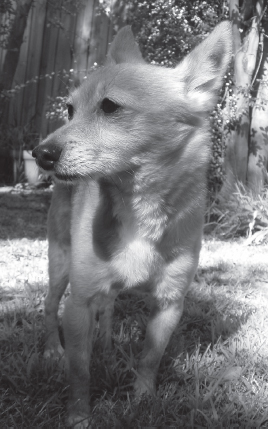
Tiger
Around the same time that Ben was discovering the difficulties of finding inner-city rental accommodation with limited income, no job, HIV, and a dog, five hundred miles away another man was considering the possible benefits of killing himself. Diagnosed with HIV in 1985, Dylan was tired of living with the legacy of this diagnosis: kidney and liver problems from early HIV medications such as zidovudine (AZT), weight loss and rapidly thinning bones, and lately, an overwhelming and exhausting depression. He was sick of waiting for the next sign that his body was giving up and had become increasingly reclusive as his gaunt frame and protruding cheekbones screamed I have AIDS to the world. Increasingly, he was just sick of living.
As Ben had a decade earlier, Dylan weighed up his options. His partner, Pete, would survive, and he believed Pete would eventually understand and maybe even come to respect his decision. Dylan and Pete had been together for twenty years and their relationship was solid, but much of their lives revolved around Dylans health. It was the animals who would struggle to comprehend his choice to leave them. Gus and Sunny, the dogs, and Celia, the cat, had never known Dylan without HIV. Gus in particular had invested so much in keeping Dylan alive. According to Dylan, Gus was uncompromising about his HIV medication regimen: Therell be days when Ive had things going on in the old brain and Ive forgotten to take the morning pills. I start to get things ready to take Gus and Sunny out for the morning walk and Sunnys there, bouncing around, but Gus isnt. Hell be sitting there, by the fridge in the kitchen, with his head cocked to one side, waiting. And then I realize Ive forgotten to take my pills. Once he sees me swallow the pills and put the water back in the fridge, hes bouncing all over the place and ready for his walk. I feel that hes watching to make sure Im doing the right thing.

